-
Posts
5,391 -
Joined
-
Last visited
-
Days Won
3
Content Type
Profiles
Forums
Blogs
Gallery
Events
Store
Posts posted by Gordon Williamson
-
-
Anyone care to take a stab at identifying the maker of this rather distinctively shaped Wound Badge ?

 0
0 -
John,
Thats a very tricky one because the numbers of awards made rarely correlate with the number of examples produced. It was common for soldiers to have several examples of some of their badges. I know of some U-Boat men who had 4 or 5 examples of the badge, others only one. Add in any which were manufactured but still in storage, unissued, or in retail outlets unsold, and the numbers could be just about anywhere.
U-Boat men who went down with their boats could easily have left several examples of the badge behind at home. Not every U-Boat man survived the two war cruises required to get the badge and not every one who was KIA had the award sent posthumously to their family. Some did, some didn't.
Nice thought, but an almost impossible challenge.
0 -
Can you measure the overall width and height. If its a casting these will probably be somewhat less that an original die striking.
First impressions are that the detailing is a bit "soft", the shape of the pin isn;t right and the maker mark doesn't quite look right and is very deeply struck which would be very unusual on an original.
0 -
Textbook Deschler KVK1. Very nice!
0 -
Was this only for war invalids after discharge from the military?
I've never seen a photograph of any Japanese soldier WEARING one. I would think that they should be quite common if awarded for ordinary wounds and handed out to every wounded serviceman, but these badges do not turn up very often.
Curious about any further details on who got this, when, and why.
Rick,
Here is a photo of the badge being worn that appeared in the E-Bay auction I got it from (from Johnny Lofgren of Gunjinantiques).
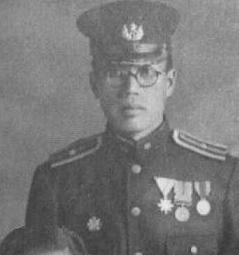
 0
0 -
The only difference is the upper centre Kanji for Sen (Left) or Ko (Right)
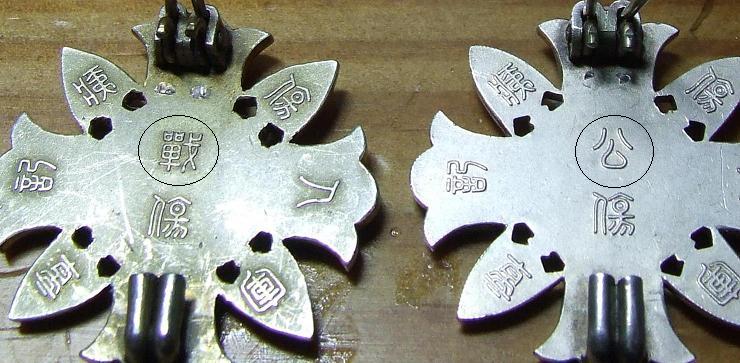
 0
0 -
Reverse
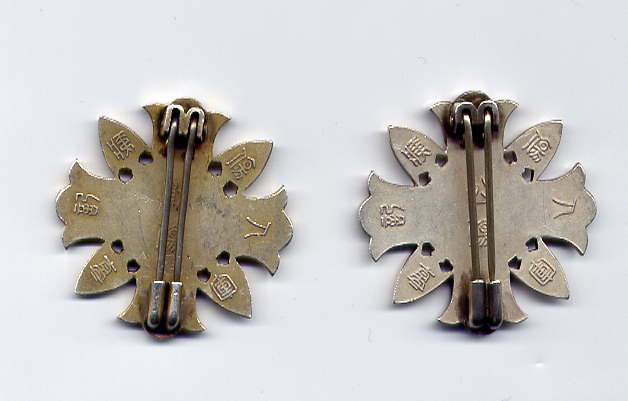
 0
0 -
Here are the Sen Sho and Ko Sho together with a German Wound Badge for size comparison. Most book illustrations don't convey a sense of how small these are, but beautifully executed.
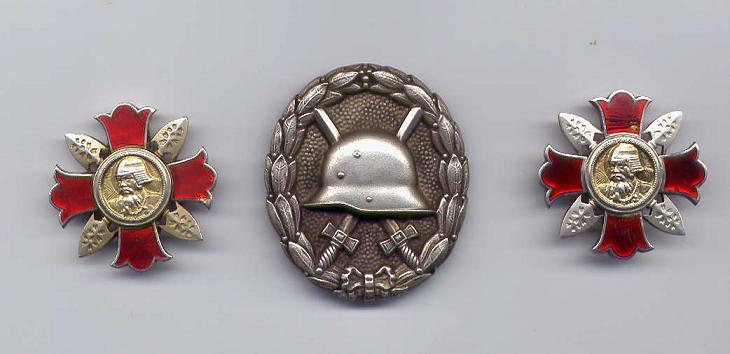
 0
0 -
Very nice piece indeed Terry !
0 -
Hymmen & Co of L?denscheid
0 -
Both absolutely OK.
0 -
Hey Jim ,
Now you need this to go with your early Type VII
My first step will be the razor saw to cut it down to waterline. This one cries out to be set in a seascape diorama.
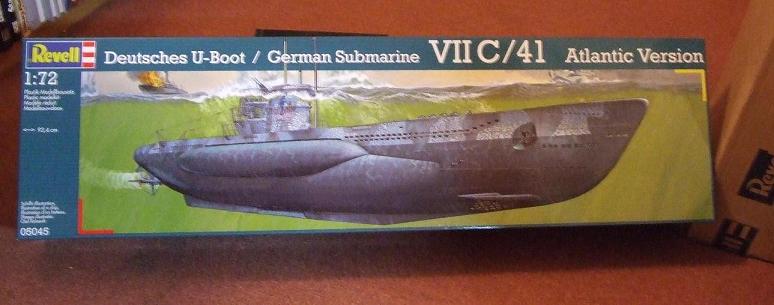
 0
0 -
A bit late but never mind, one of my Christmas arrivals now nearing completion. His Imperial Japanese Majesty's Ship "Mikasa", victor of the Battle of the Japan Sea. Rigging these things is a real pig of a job ! Roll on the next simple U-Boat kit, no rigging isssues there !

 0
0 -
I like the look of it, though the furniture isn't what you'd normally find on an L/18. However, it is worth noting that this form produced two patterns of U-Boat badge which are totally unlike each other so the precedence is already there for this firm producing more than one type for a given badge.
0 -
thanks Gordon. The badge on top is mine and is to sell on another forum.
jacques
I have a Bundesmarine version by Assmann which I will scan later. It seems the same as yours but is of course very new looking and shiny, with the Assmann "A" mark. I guess yours is the original wartime Assmann pattern that the later one was based on. This is the type worn on the wartime photo above, with the wide prong being inserted into the buttonhole of the jacket lapel. Also I note that on yours the bronze tombak colour shows through the fire gilding, the new postwar ones are of course brass, not tombak.
0 -
Though still generally referred to as Wernstein by many, there seems to be doubt now over whether this maker mark actually belongs to the Wernstein firm. Unfortunately, if not Wernstein, there doesn't seem to be any form evidence of which firm it does belong to.
0 -
I'm looking forward to it! Just for the record, Gordon, how long did it take to write?
Difficult to say Bob, as I've been slowly assembling good images of U-Boat stuff for some time, but over the last two years in particular a couple of visits to the U-Boot Archiv to select wartime photos and then receiving the huge contribution by Michel is what made it all come together at last.
0 -
Don't know the exact release date yet, but this is pretty much the very last stage before it goes to the printer, so it should be soon.
Here is my own favourite item from the book.
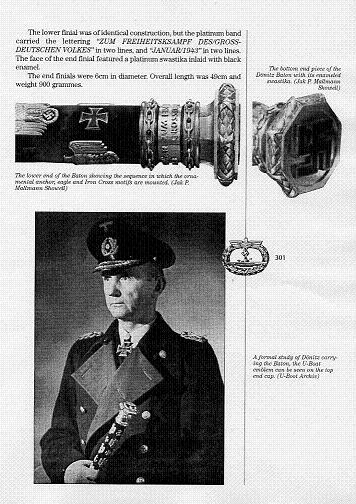
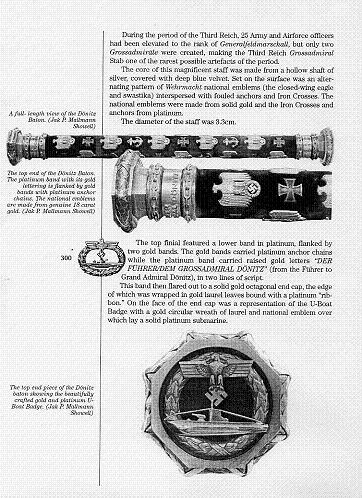

 0
0 -
There is no difference between the wartime and postwar versions I'm afraid. The postwar type made by Assmann for the Bundesmarine is the type with the single flat prong made, it would appear, by using the same tooling as the wartime one. As it doesn't feature a swastika in the design there was no need to alter it.
The main diference is in the finish which will be brighter , but any made during the early days of the Bundesmarine will by now have naturally toned down quite well. The postwar ones usually have the Assmann "A" logo though. The combination of the "A" on a newish looking example warrants caution, but all three of the examples shown above look OK.
0 -
The bulk of the wartime photos are from the fabulous collection of the U-Boot Archiv and a substantial percentage of the income from each copy sold will be donated to the Archiv.

 0
0 -
It covers uniforms, insignia, headgear, awards, medals, documents, cap ribons etc etc. Thanks especially to Michel and Fran?ois, there are some real superb "eye-candy" pieces to see.
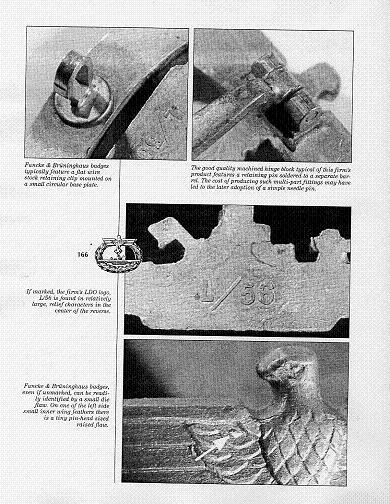


 0
0 -
Just a little taster for you. I have received the proof pages from Bender Publishing for my new book. This will give an idea of how it will look. These are just rough Xerox copies, the actual book will be A4 size, around 400 pages and full colour throughout.
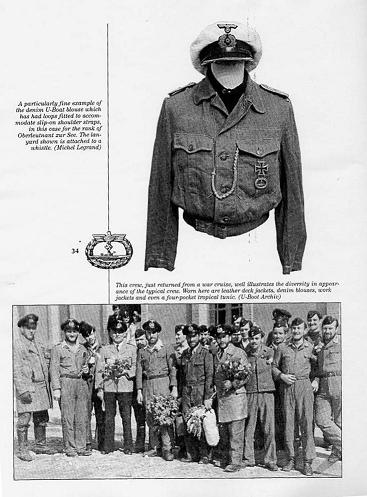


 0
0 -
Die struck badges are generally stamped from a strip of sheet metal, using two tools. e.g. a U-Boat Badge, first a blanking die tool stamps out the basic part which will still have a "flashing" of metal around the edges and has a "solid" centre. This is then put into a finishing tool which crops off the excess metal around the edge and voids out the centre. This second operation is what gives the shear lines or striations around the edges.
Cast badges using similar die tools (not moulds) but instead of being stamped, molten metal is forced into the die under pressure. This allows parts like the hinge, retaining hook etc to be formed integrally with the badge. Again there will be a "flashing" of surplus metal around the edges and in the centre which is cropped off using a finishing tool.
In both cases, die stamped or die cast, there will be striations around the edge, but not a casting line like you see on cast fakes, which are low volume production pieces in which the metal is poured into a mould.
This planchette for a U-Boat clasp will show you what I mean re the flashing of excess metal which has to be cropped off.
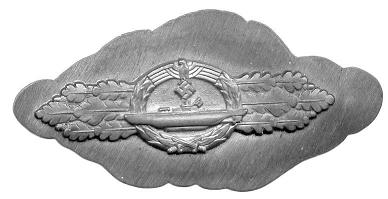
 0
0 -
Pank ?
My 1944 rank list shows a Fregattenkapit?n Pank, who was promoted from Korvettenkapit?n in June 1944 so the dates would match.
0




Wound Badge ID
in Germany: Imperial: The Orders, Decorations and Medals of The Imperial German States
Posted
Nah, if you saw the back it would make it tooooo easy.